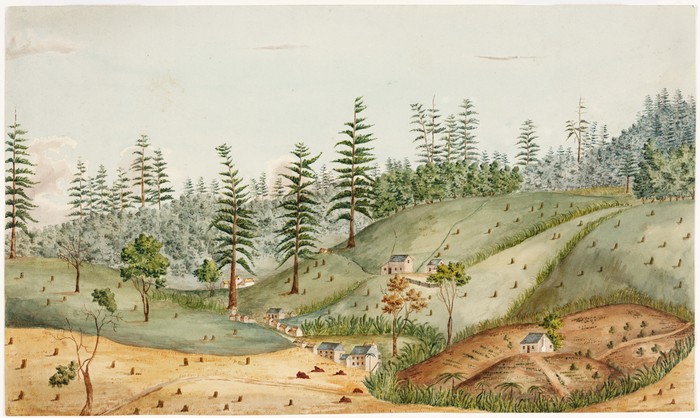
A view of Queenborough on Norfolk Island
c1804
Watercolour on paper
Bequest of Sir William Dixson, 1952
DL Pd 397
Watercolour on paper
Bequest of Sir William Dixson, 1952
DL Pd 397
This watercolour of the settlement of Queenborough on Norfolk Island was painted by someone who had never been there! Norfolk Island was settled only a couple of months after the First Fleet landed in Sydney in January 1788. It was hoped that the island’s famous pines could provide masts and spars for the British navy, and the flax that grew there cloth for its sails.
Queensborough, now known as Longridge, was south of what is now the island’s airstrip. The settlement was established in a protected, fertile valley in June 1790: the land was cleared, corn planted, and huts built.
John Eyre, however, never visited Norfolk Island. This watercolour is probably a copy of a drawing made on the island around 1796 by storekeeper William Neat Chapman, who was a good friend of the island’s governor, Philip Gidley King. King later commissioned Eyre to copy Chapman’s watercolour. Chapman’s original wash drawings were in black and white, so Eyre would have guessed the colours or perhaps relied on King’s descriptions of the Norfolk landscape.


 Back to list
Back to list